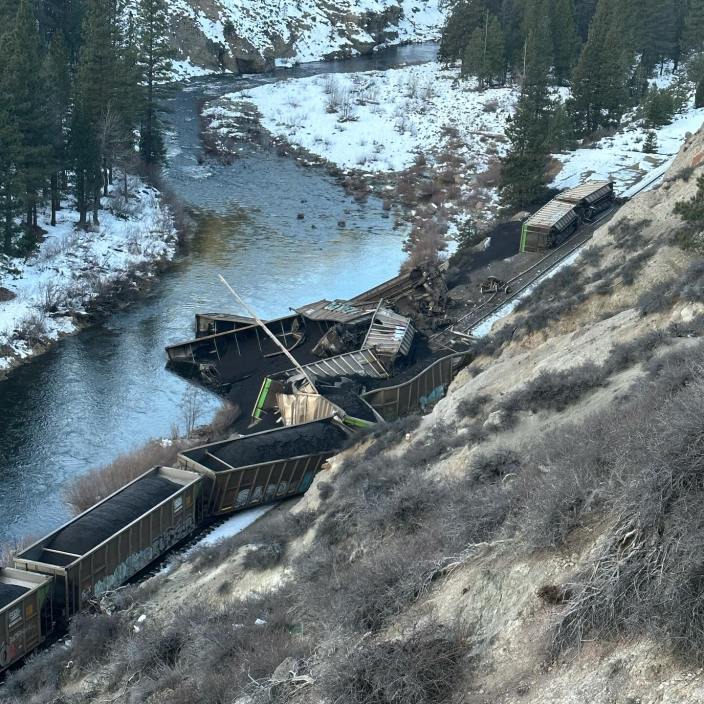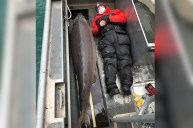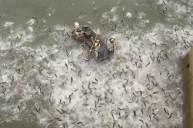After multiple 2023 train derailments (Montana and Ohio), yet another river has fallen victim to a hazardous material spill—this time in Northern California. On February 11, a freight train carrying 118 tons of coal derailed, dumping an "unspecified" amount of coal into the Feather River in Plumas County, according to a Facebook post from the California Department of Fish and Wildlife. Officials said that 15 railcars filled with coal derailed near the Middle Fork of the river due to a track defect.
On top of its recreational appeal, the Feather River is well-known for being a world-class trout fishery.
"Three cars entered the water, spilling a portion of their cargo. Operations are underway to remove the third car and repair the railway," the agency said.
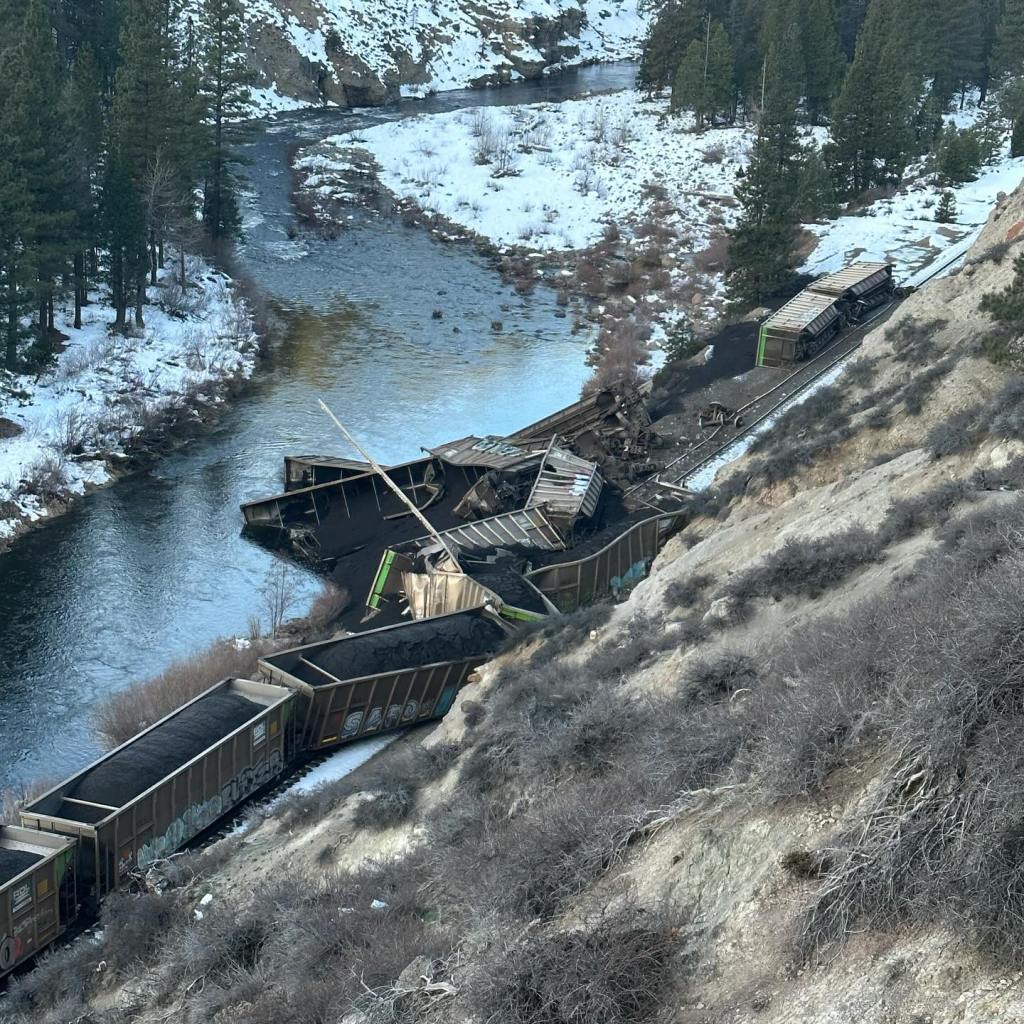
California Department of Fish and Wildlife
Initially, a Unified Command was set up to deal with containment and cleanup, including representatives from the California Department of Fish and Wildlife and Union Pacific Railroad. The Environmental Protection Agency (EPA) and the Office of Spill Prevention and Response (OSPR) also had crews onsite to determine how much coal entered the water.
Crews are attempting to remove the rail cars from the water while an on-scene coordinator and emergency response program contractor from the EPA assess the environmental impacts of the spill. Currently, the officials say there are no apparent "impacts to fish or wildlife."
"While in the short term, coal is not expected to have significant aquatic toxicity impacts, it can potentially have smothering effects on organisms in the river," the OSPR wrote in a Facebook post. "Cleanup operations continue today and biologists are assessing potential ecological impacts and implementing impact avoidance and minimization measures as part of the response."
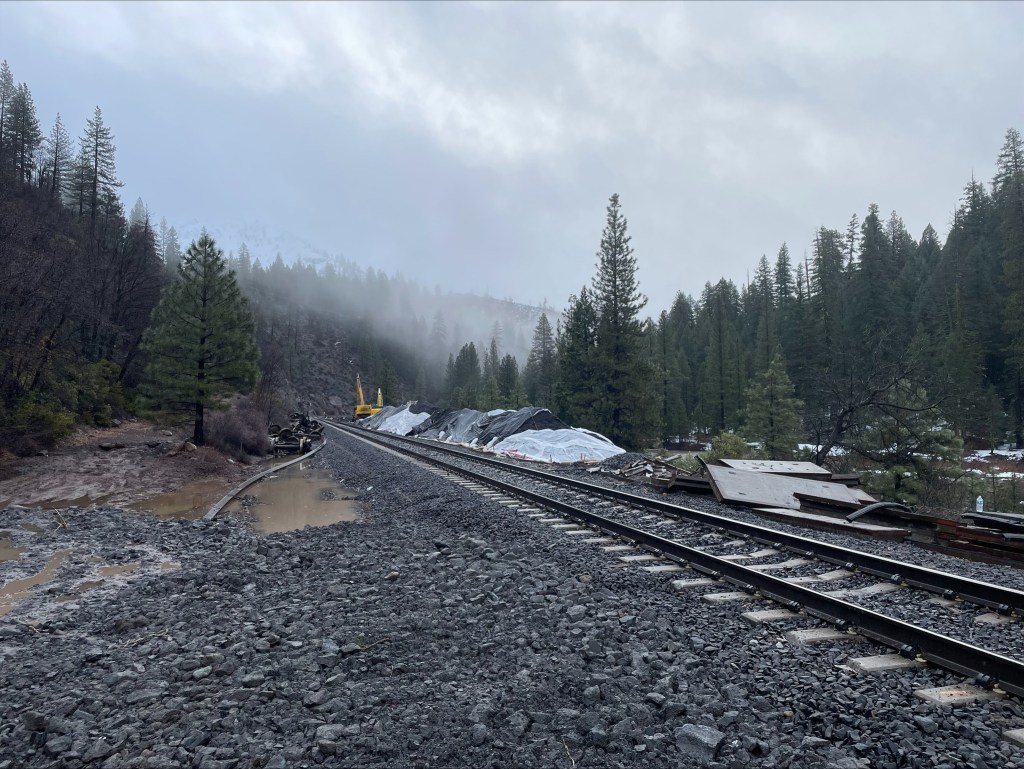
California Department of Fish and Wildlife
Conservation groups have pushed for more regulation of trains to minimize environmental hazards to wildlife. "Train tracks often follow rivers, underscoring the need to eliminate train derailments," said Curtis Knight, Executive Director of California Trout. "The train derailment on the Upper Sacramento River in 1991 showed how bad it can be—41 miles of rivers killed by tank car full of 17,000 gallons metam sodium (a soil fumigant) that spilled in the river as result of this derailment. Let's not let a place like the Feather River experience a similar fate," he said.
The CDFW wrote that land-based remediation has started in the area, and they have implemented the "best management practices" to reduce any further spread of the coal. In a recent update from February 22, the agency said that the break in rain will allow them to do more work in the river, including getting the last rail car out of the water, along with the corresponding coal. The coal already collected will be "transported by rail for disposal," according to official updates.
Railway operations resumed on February 13, but with heavy machinery used for remediation and coal removal, motorists and pedestrians are urged to avoid the area between Sloat Road and Camp Layman Bridge. Of course, it's wise to stay out of the cold waters during this time of year, but water lovers must avoid the area for safety while crews continue to work.
READ MORE: Study Shows Certain Montana Fish Are "Possibly Cancer-Causing" After Train Derailment Contamination in June
